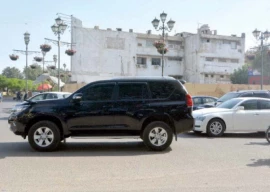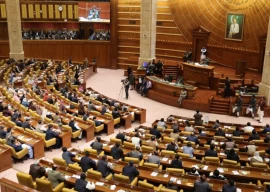
Major General Ashfaq Nadeem, commander of the outgoing division told news reporters, “We still remember when there was chaos and unrest. The people of Swat told us not to leave a single extremist in Swat valley. One division is moving on a routine basis while the other will stay in Swat.”
The roads of Swat are busy filled with convoys and the division will have completed its move by February 8, according to army officials.
The army came to Swat after the Taliban started challenging the writ of the government in 2007, forming their own courts to decide cases under their version of Shariah Law. They created their own rule in the valley.
Two army divisions, 19 in Upper Swat and 37 in Lower Swat, were deployed to fight the Taliban militants. With normalcy restored, division rotations have begun.
While the army terms it as normal movement, leaders of many anti-Taliban groups are not happy with the army moving away.
Mukhtar Yousufzai, leader of Pukhtunkhwa Mili Awami and Swat Qoumi Jirga, said extremism was still present in Swat and prominent Taliban leaders were still on the run.
“In my view the movement of army away from Swat will lead the peaceful environment towards negativity and it will bear bad result,” Yousufzai told The Express Tribune.
The leaders of the local defence committee of Tehsil Kabal had a similar view. “The presence of army is indispensable for long-term peace because the present peace is not permanent. The leaders of Swat Taliban have neither been captured nor killed,” a leader said.
President of Swat Trade Federation Abdur Rahim, however, disagrees.
He said, “No sensible person calls it peace until the uniformed soldiers and guns are patrolling the market of Swat valley. We really appreciate the role and sacrifices of the army but now there is no need for them so they should return to their cantonments by handing over the control to the civil administration.”
Published in The Express Tribune, February 3rd, 2011.
1730464111-0/raygun-(1)1730464111-0-405x300.webp)
1730464033-0/BeFunky-collage-(12)1730464033-0-165x106.webp)

1730462074-0/BeFunky-collage-(10)1730462074-0-165x106.webp)













COMMENTS (2)
Comments are moderated and generally will be posted if they are on-topic and not abusive.
For more information, please see our Comments FAQ